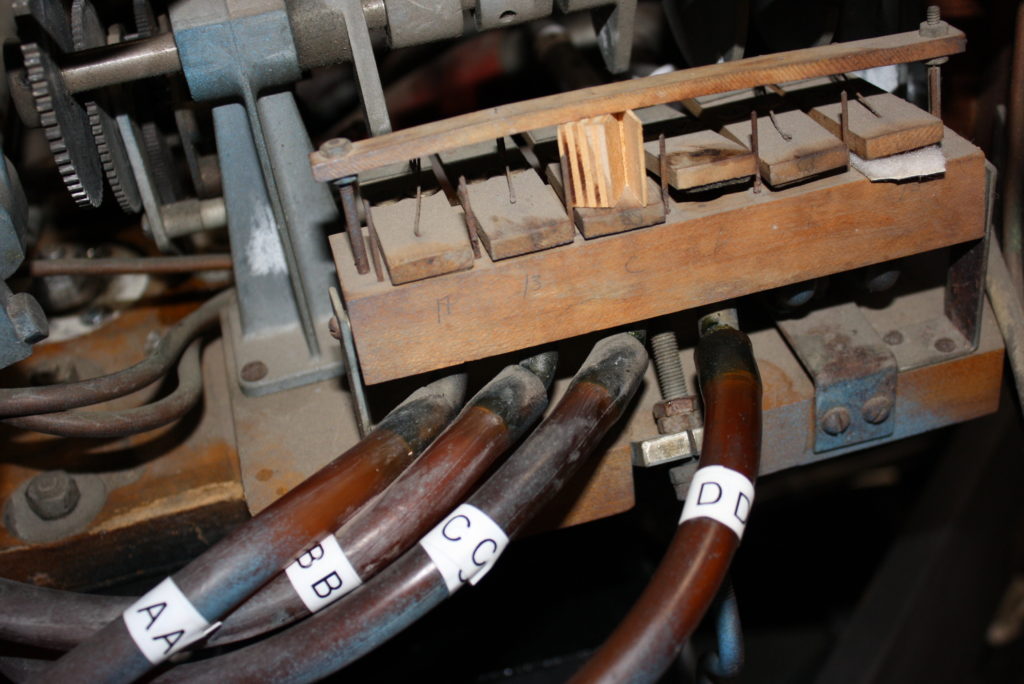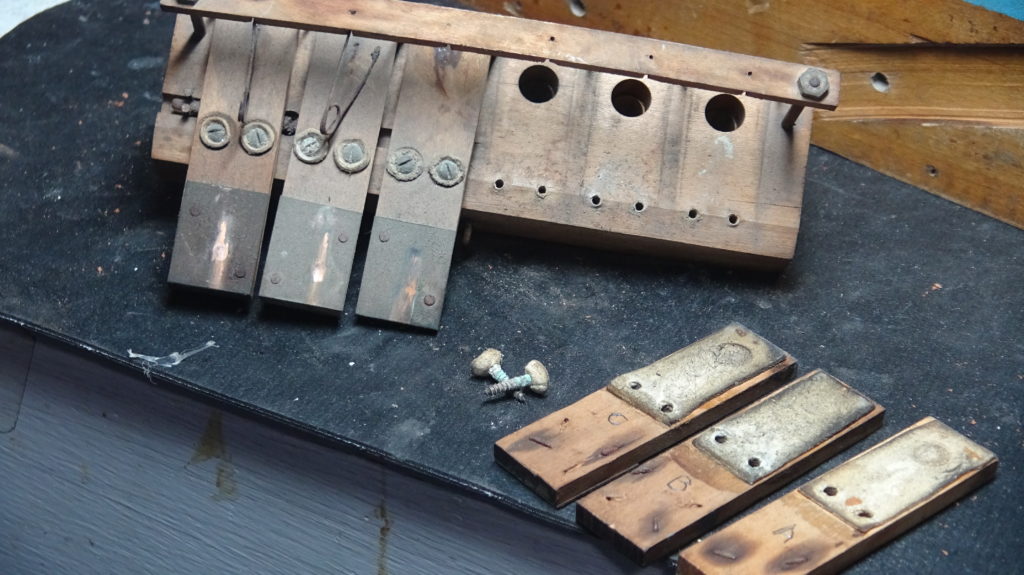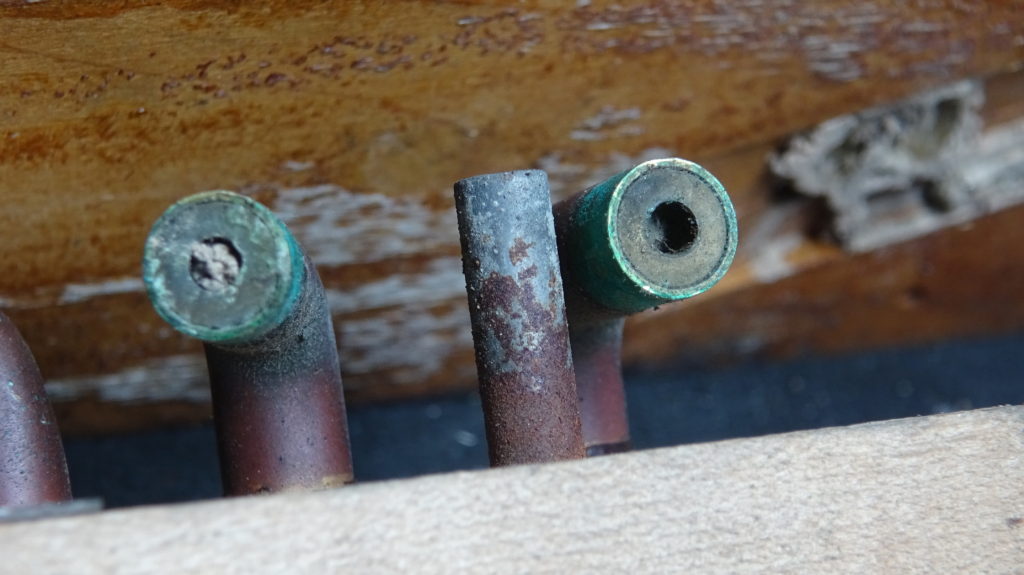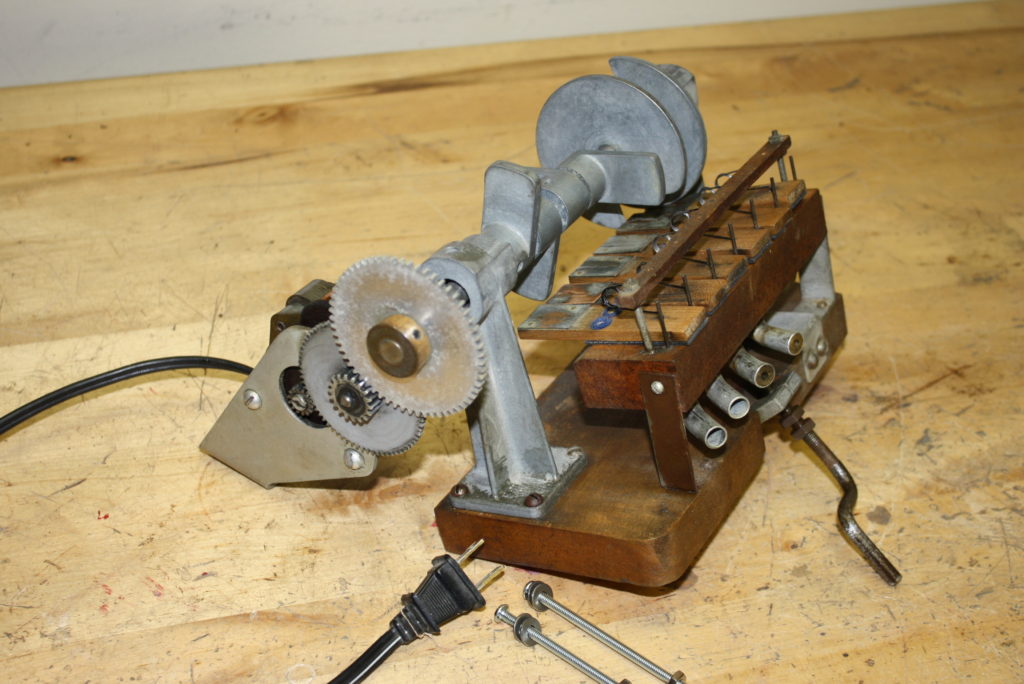Although the rough air mechanism was the least of our worries, we decided to go ahead and restore it because it was leaking so much air. At the time, we thought (incorrectly) that it might be the source of our cockpit leaning to the left while flying straight and level.
The rough air mechanism is a clever system which introduces momentary offsets into the roll, pitch, and yaw motion angles based on pseudo random vacuum pulses. The pilot feels these offsets as rough air. An electric motor continuously runs a set of 6 cams which strike 6 key valves. Each key valve controls vacuum leakage to either direction of pitch, roll, or yaw. A small crank allows the instructor to control how hard the keys are pressed; i.e. how rough it feels to pilot. Under normal conditions (i.e. smooth air), pitch and roll key valves are kept closed with springs; yaw key is kept open to always leak a controlled amount of vacuum. As the crank is turned and rough air is introduced, the keys are depressed harder and leak larger pulses of vacuum from each of the roll and pitch control valves. The yaw works opposite to stop the controlled leak during pulses of rough air.

There are two hoses coming from each of the pitch, roll, and yaw pneumatic systems. We marked them ‘A’ through ‘F’ so we got them back in the same place.


The 6 key valves are easily removable with two small screws each. These are #3 x ½” round head steel wood screws. We replaced the key washers with round felt punch-outs, and put a center hole in with an awl. The originals were lamb skin. We cleaned up each key, removed the old seal, and gave the keys a coat of wood finish. We replaced the old seal with a piece of squishy tool drawer liner glued on with contact cement. With the keys removed it was easy to give the whole unit a good cleaning and a dab of wood finish.


Each key is held closed with a small 90-degree mandrel torsion spring. Although we had all of our springs, several of them had rusted and the little angle at the tip was missing. This is an important part of the spring, because it keeps the spring from twisting to the side and popping out. We found a close match at Jones Spring Co. (part number TML-0373-028), but they did not have the little bend at the end. Carl heated each tip up to cherry red, bent the tip over, and quickly cooled them so as not to lose the spring action. They work fine.

Our crank screw, which controls how much rough air the pilot gets, was rusted frozen. It took a couple days of penetrating oil to loosen it. Once it turned, we cleaned up the threads, and lubricated it.
The zip cord going to the electric motor was completely deteriorated. We replaced it, cleaned up the motor, and lubricated its brass bushings. The motor is hardy and still runs.

Reassembly went well.
